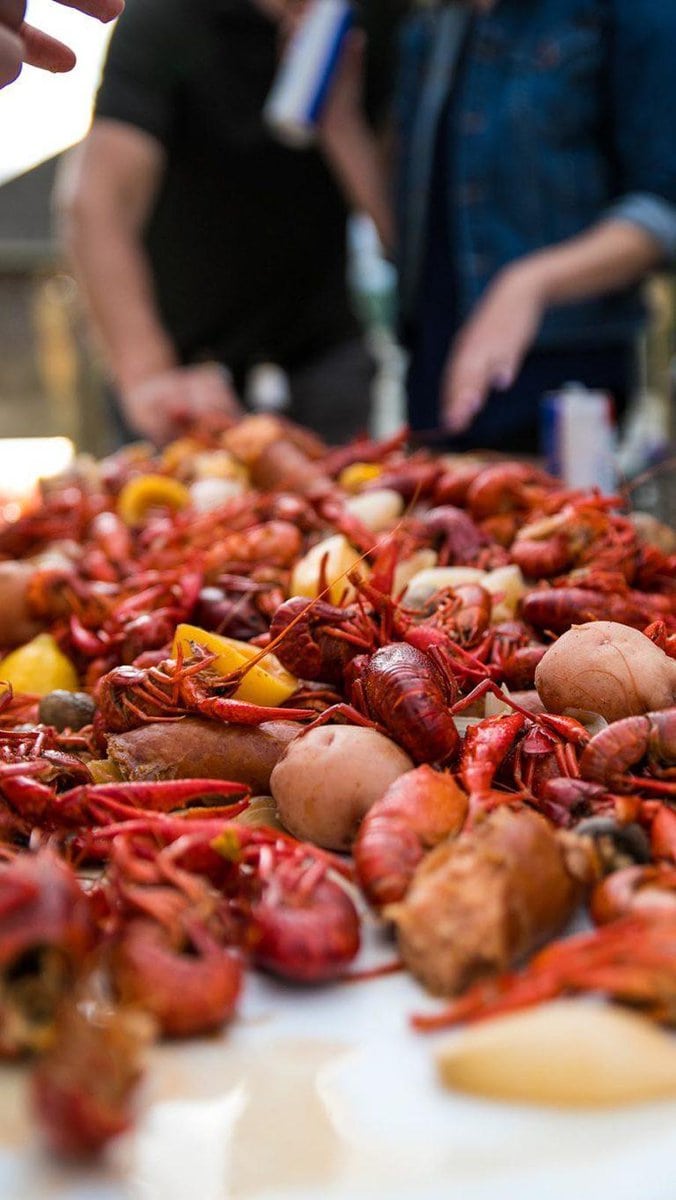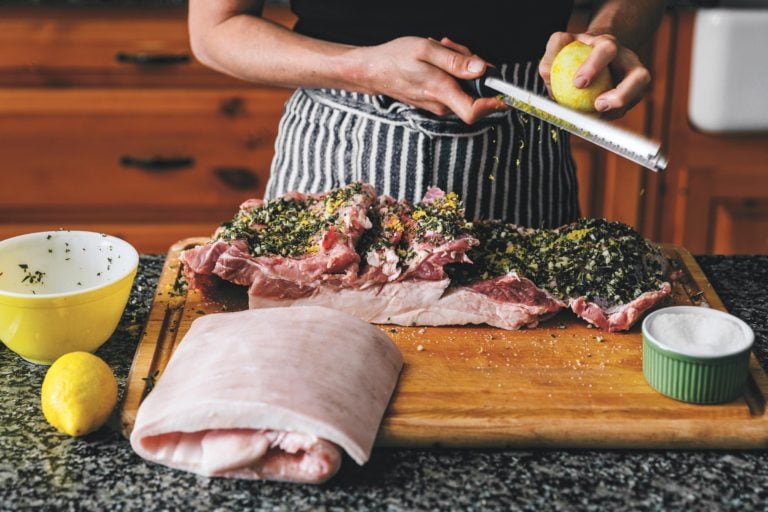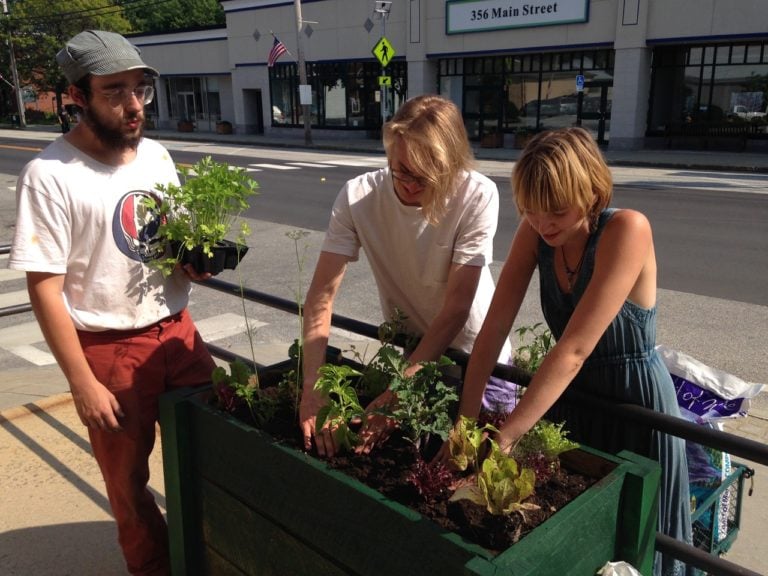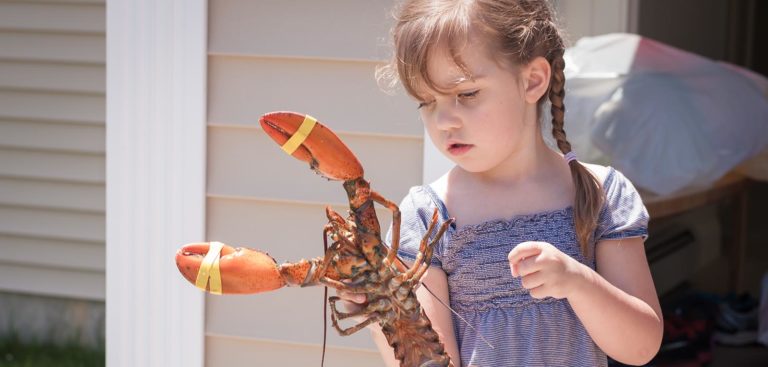I begin every One Fish Foundation class I teach with two important points. First, I define sustainable seafood as being local, abundant, and harvested or farmed using balanced ecological methods, weighing socioeconomic considerations, and complying with local, state, and federal laws. Second, I explain why eating sustainable seafood matters.
I start with these two points whether I’m speaking with elementary school or graduate school students—though of course I scale the conversation to fit the age bracket. I want all students to understand their relationship to seafood, feel empowered to ask questions about the seafood they encounter, and take responsibility for their decisions regarding it.
You, too, can teach your children to own their relationship with seafood using this five-point plan.
Help children see their relationship to seafood, even if they think it’s yucky.
Most of the students I teach do like some types of seafood. From clams and crab to salmon and seaweed, there are many options. When they do choose to eat seafood, it’s important they understand how their choices impact the sustainability of each species. If they like sushi rolls with salmon, for example, they should know eating them has ecological, economic, and socioeconomic consequences based on whether the salmon was caught in the wilds of Alaska and shipped across the country or farm-raised in Maine. Eating either will affect more than their hunger.
If your kids avoid eating seafood, talk to them about how their everyday actions—like avoiding plastic products, picking up trash, and walking or biking versus car travel—have an impact on marine ecosystems.
Tell them a story about the seafood on their plate.
Some pundits say 90% of the seafood consumed in America is imported, while others think the number is around 65%. Even the latter is high, considering that we harvest more than five million tons of seafood domestically per year. Either way, imported seafood is often the cheaper choice at the store, but consumer apathy also drives this food system dynamic. Your kids like cocktail shrimp, for example, so you run to the supermarket and grab the frozen bag with the best price, not reading the fine print that says, “Product of China.” Most times, that designation indicates the shrimp was farm-raised with antibiotics, hormones, and pesticides.
Knowing where your kids’ seafood comes from is a crucial consideration. If the haddock they’re eating comes from a fish harvester they know in their community, explain that. If it was caught in the Gulf of Maine, point that out too. If it was harvested in the U.S., talk about how fishermen must follow some tough rules that help ensure we have fish to eat in the future.
There are fun stories to tell your kids about the seafood on their plates. For example, they might think it’s cool that lobsters can escape from traps. The ones that end up on their plates just happened to be in the trap when it was pulled on board. Learning more about where and how their food was pulled from traps, reeled in, or caught in nets contributes to a better understanding of sustainability.
Present seafood as a renewable resource—if we take care of it.
Wild Atlantic salmon is a good example of what happens when humans don’t take care of a resource over a long period of time. For centuries, we fished them to near extinction and degraded the ecosystems they depend on. Today, we are taking slow steps toward stock recovery, like eliminating commercial Atlantic salmon harvests and removing dams that block access to spawning beds. Sockeye salmon harvested in Bristol Bay, Alaska, is an example of a wild salmon population that is abundant because we’ve ensured healthy stocks and pristine spawning grounds. Talk to your children about taking care of the rivers, lakes, and oceans around them.
Show how seafood is a good-for-you protein.
You’d think this one would be a layup, but younger students need guidance to understand that what they eat affects how they feel. I use the metaphor of what happens when they eat too much candy to show the direct cause and effect of food decisions. With high school and college students, we can explore more about why seafood is a healthy option and still discuss some natural and human-caused factors that can contaminate seafood, like mercury, red tide, and microplastics.
Make learning about seafood fun!
There are many seafood species that can spark student curiosity. Did you know that scallops can have up to 200 eyes? Or that monkfish, which swim on the ocean floor, can swim vertically over 400 feet to the surface to feed on small arctic seabirds at night? Sign up for the One Fish Foundation newsletter, which includes a fascinating Fish of the Month article. Sparking kids’ curiosity will make them want to learn more about sustainable seafood and how to enjoy it on many levels. They may even want to spread the word.














